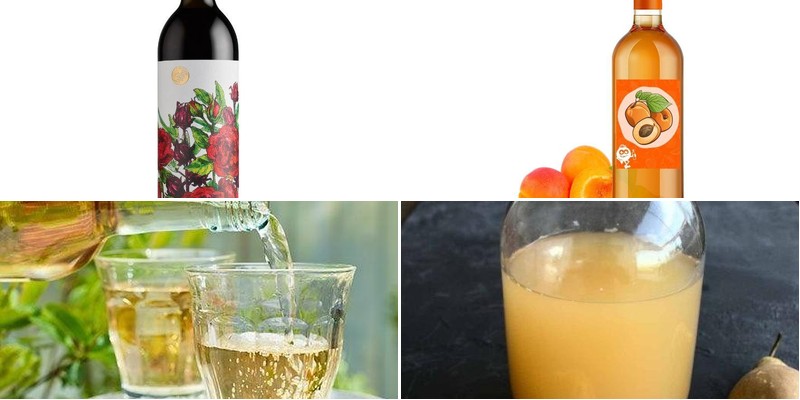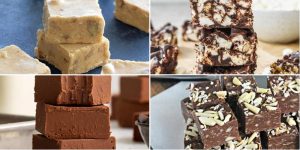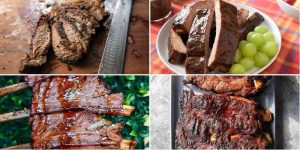You’ve probably enjoyed a glass of wine with dinner, but have you ever considered cooking with it? From rich red wine reductions to delicate white wine sauces, these 24 recipes will transform your homemade meals into restaurant-worthy creations. Get ready to uncork new flavors and impress your family with these delicious wine-infused dishes!
Classic Red Grape Wine
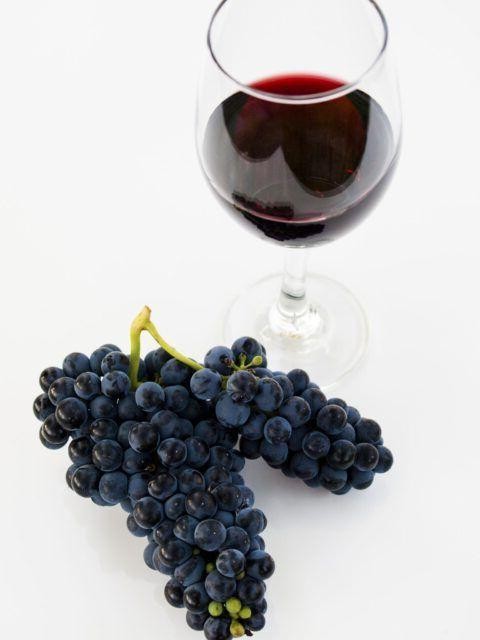
Finally, let’s talk about the liquid luxury that makes any Tuesday feel like a Friday—Classic Red Grape Wine. Forget those fancy bottles with unpronounceable names; we’re diving into the glorious chaos of homemade vino that’ll have you feeling like a vineyard rockstar (or at least someone who knows which end of the cork goes where).
1
batch45
minutesIngredients
– 10 pounds of plump, deeply-hued red wine grapes
– 2 cups of granulated white sugar
– 1 packet of active dry wine yeast
– 1 gallon of filtered, crisp water
– 1 teaspoon of powdered wine tannin
– 1 Campden tablet, crushed to fine powder
Instructions
1. Thoroughly wash and destem 10 pounds of plump, deeply-hued red wine grapes, discarding any bruised or moldy specimens.
2. Gently crush the grapes using a sanitized potato masher or your impeccably clean hands until the juice flows freely and skins break open.
3. Stir in 2 cups of granulated white sugar until completely dissolved into the grape mixture.
4. Dissolve 1 packet of active dry wine yeast in 1/4 cup of warm water heated to 100°F, then let it bloom for 10 minutes until frothy.
5. Combine the yeast mixture with the crushed grapes in a sanitized fermentation bucket.
6. Add 1 gallon of filtered, crisp water and 1 teaspoon of powdered wine tannin, stirring vigorously for 2 minutes to incorporate oxygen.
7. Cover the bucket with a clean cloth and secure it with a rubber band, allowing wild yeasts to settle for 24 hours at room temperature.
8. After 24 hours, stir in 1 crushed Campden tablet to eliminate any remaining wild yeast or bacteria.
9. Seal the bucket with an airlock filled with water and ferment in a dark space maintaining 68-72°F for 7 days.
10. Punch down the floating grape cap twice daily using a sanitized spoon to prevent mold growth.
11. Strain the liquid through a fine-mesh bag into a glass carboy, squeezing gently to extract remaining juice.
12. Attach a fresh airlock and continue fermenting for 4-6 weeks until bubbling slows to one bubble per minute.
13. Siphon the wine into clean bottles using a racking cane, being careful not to disturb the sediment layer.
14. Cork the bottles securely and age horizontally in a cool, dark place for at least 6 months.
Let this ruby elixir transport you—its velvety texture glides across the tongue while bold fruit notes dance with just enough tannic structure to keep things interesting. Pour it alongside sharp cheeses for maximum sophistication, or honestly, just enjoy it while binge-watching your favorite show because adulthood should taste this good.
Rich Apple and Cinnamon Wine
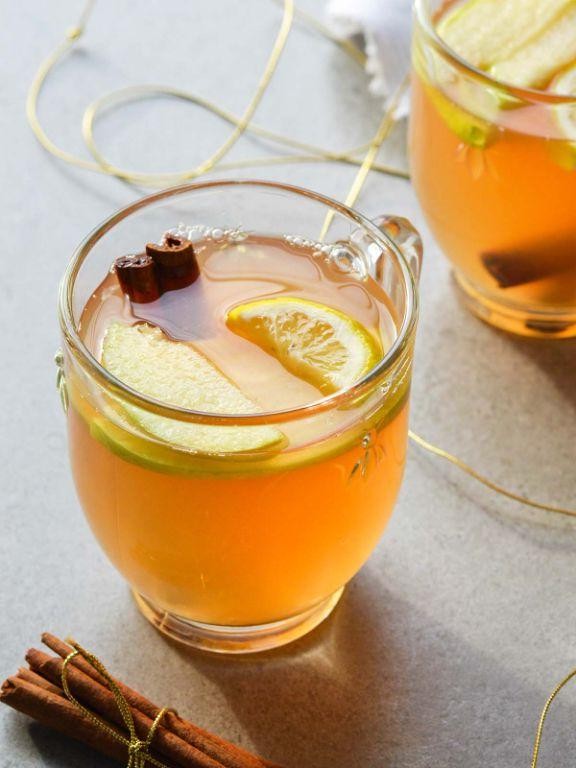
Zesty autumn vibes are calling, and what better way to answer than with a potion that turns humble apples into liquid gold? This Rich Apple and Cinnamon Wine is basically fall in a glass—warm, spiced, and guaranteed to make your taste buds do a happy dance.
1
gallon30
minutes5
minutesIngredients
- 8 cups crisp, sweet-tart apples, cored and roughly chopped
- 2 cups granulated sugar
- 1 cup golden raisins
- 4 cinnamon sticks, fragrant and whole
- 1 packet active dry yeast
- 1 gallon filtered water
- 1 large orange, thinly sliced with the peel on
- 1 tsp nutrient-rich yeast nutrient
Instructions
- Combine 8 cups of crisp, sweet-tart apples, 2 cups of granulated sugar, 1 cup of golden raisins, 4 fragrant whole cinnamon sticks, and the thinly sliced orange in a large, sanitized fermentation bucket.
- Bring 1 gallon of filtered water to a boil at 212°F, then carefully pour it over the fruit mixture in the bucket.
- Stir the mixture vigorously with a long-handled spoon until all the sugar has completely dissolved.
- Allow the mixture to cool, uncovered, until it reaches precisely 75°F—test this with a floating thermometer for accuracy.
- Sprinkle 1 packet of active dry yeast and 1 tsp of nutrient-rich yeast nutrient over the cooled liquid.
- Gently stir just to incorporate the yeast, then cover the bucket loosely with a clean cloth or lid to allow gases to escape.
- Store the bucket in a dark, cool spot like a pantry, maintaining a steady temperature between 68–72°F.
- Stir the mixture once daily for 7 days, watching for bubbles and a yeasty aroma to confirm fermentation is active.
- After 7 days, strain the liquid through a fine-mesh sieve or cheesecloth into a clean 1-gallon glass jug, discarding the solid fruit and spices.
- Fit the jug with an airlock filled halfway with water, then let it ferment undisturbed for 4 weeks until bubbling in the airlock stops completely.
- Siphon the wine into sterilized bottles, leaving any sediment behind in the jug.
- Seal the bottles tightly and age them in a cool, dark place for at least 3 months to allow the flavors to meld and mellow.
Lusciously smooth and warmly spiced, this wine boasts a velvety texture with vibrant apple notes dancing alongside cozy cinnamon. Serve it chilled in elegant glasses for a festive touch, or gently warmed in mugs during crisp evenings—either way, it’s pure autumn magic you bottled yourself.
Crisp Pear Wine
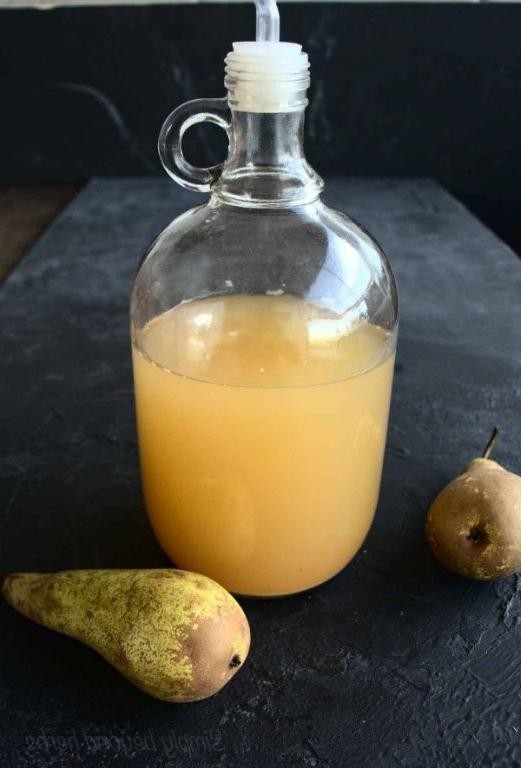
Brace yourselves, wine enthusiasts—this crisp pear wine is about to become your new favorite kitchen adventure that’ll make you feel like a backyard vintner without the fancy equipment. It’s the perfect sipper for those who think fruit belongs in a glass, not just a fruit bowl, and trust me, your friends will be begging for the recipe after one tangy, effervescent taste. Let’s turn those pears into pure liquid gold!
1
gallon45
minutesIngredients
– 5 pounds of ripe, fragrant Bartlett pears
– 2 cups of granulated white sugar
– 1 packet of active dry wine yeast
– 1 gallon of filtered, cool water
– 1 teaspoon of powdered wine tannin
– 1 Campden tablet, crushed
Instructions
1. Thoroughly wash and chop 5 pounds of ripe, fragrant Bartlett pears into small, uniform chunks, leaving the skins on for extra flavor.
2. Place the chopped pears into a large, sanitized fermentation bucket.
3. Dissolve 2 cups of granulated white sugar completely into 1 gallon of filtered, cool water in a separate pot, stirring continuously over low heat until no granules remain.
4. Pour the sugar-water mixture over the pears in the fermentation bucket, ensuring all fruit is submerged.
5. Crush 1 Campden tablet finely and sprinkle it into the mixture to sterilize, then cover the bucket loosely and let it sit undisturbed for 24 hours at room temperature (68–72°F).
6. After 24 hours, sprinkle 1 packet of active dry wine yeast evenly over the surface of the liquid.
7. Add 1 teaspoon of powdered wine tannin to the bucket for complexity and structure.
8. Stir the mixture vigorously with a sanitized spoon to incorporate the yeast and oxygenate the liquid.
9. Seal the bucket with an airlock filled with water to allow gases to escape while blocking contaminants.
10. Ferment the wine in a dark, cool place (65–70°F) for 4 weeks, or until bubbling in the airlock stops completely.
11. Siphon the clear wine off the sediment into a clean, sanitized glass carboy, being careful not to disturb the lees at the bottom.
12. Age the wine in the carboy for 3–6 months in a cool, dark spot to develop smoothness and flavor.
13. Bottle the finished wine in sterilized bottles, cork securely, and store horizontally.
Lusciously crisp and subtly sweet, this pear wine dances on the palate with bright acidity and a whisper of floral notes—it’s like autumn in a glass. Serve it chilled alongside a sharp cheese board or pour it over ice for a refreshing spritzer that’ll make any Tuesday feel like a celebration.
Zesty Blueberry Wine
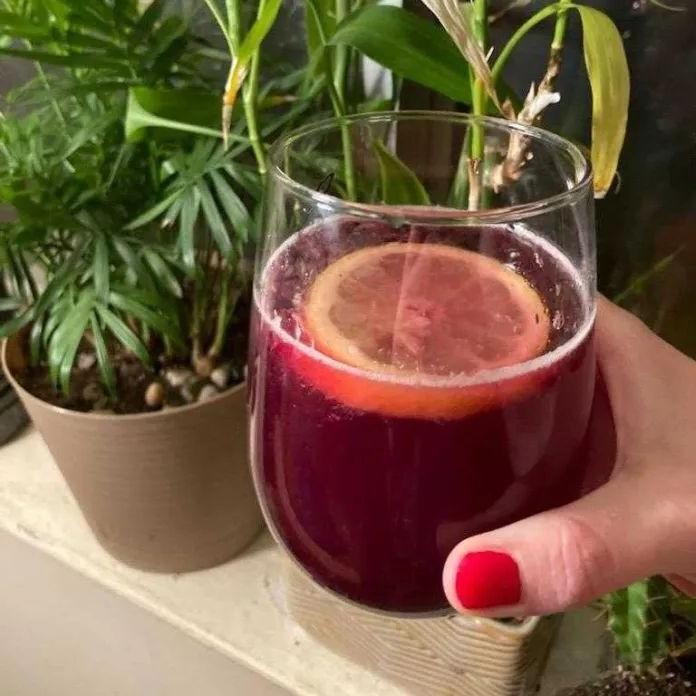
Dazzle your taste buds and impress your friends with this unexpectedly fabulous blueberry wine that transforms humble berries into a sophisticated sipper worthy of any celebration. Forget everything you thought you knew about complicated winemaking—this approachable recipe delivers big flavor without the fuss. Prepare to become the neighborhood’s most sought-after vintner (or at least the most interesting dinner guest).
1
gallon30
minutesIngredients
– 4 cups plump, juicy fresh blueberries
– 2 cups granulated white sugar
– 1 packet active dry wine yeast
– 1 gallon filtered spring water
– 2 whole organic lemons
– 1 campden tablet (for sterilization)
Instructions
1. Thoroughly wash and crush 4 cups of fresh blueberries using a potato masher until they release their deep purple juices.
2. Zest both organic lemons using a microplane, being careful to avoid the bitter white pith.
3. Juice the zested lemons through a fine mesh strainer to catch any seeds.
4. Combine the crushed blueberries, lemon zest, and lemon juice in a large sterilized fermentation bucket.
5. Dissolve 2 cups of granulated sugar into 1 gallon of filtered spring water heated to 100°F, stirring until completely clear.
6. Pour the sugar water mixture over the blueberry mixture in the fermentation bucket.
7. Crush 1 campden tablet and stir it into the mixture to eliminate wild yeast and bacteria.
8. Cover the bucket with a clean cloth and let it sit undisturbed for exactly 24 hours at room temperature (68-72°F).
9. Sprinkle 1 packet of active dry wine yeast over the surface and gently stir to incorporate.
10. Fit the bucket with an airlock and store in a dark place maintaining 65-70°F for 3 weeks.
11. Carefully siphon the wine into a clean glass carboy, leaving the sediment behind at the bottom.
12. Age the wine in the carboy for 2 months in complete darkness at 60-65°F.
13. Bottle the clear wine using a siphon and corker, storing bottles on their sides in a cool cellar.
Fantastically vibrant and surprisingly complex, this blueberry wine boasts a beautiful ruby hue and bursts with bright berry notes balanced by subtle citrus undertones. Serve it slightly chilled in elegant stemware for maximum wow factor, or get creative by mixing it into sparkling cocktails—either way, prepare for compliments to flow as freely as the wine itself.
Warm Spiced Mulled Wine
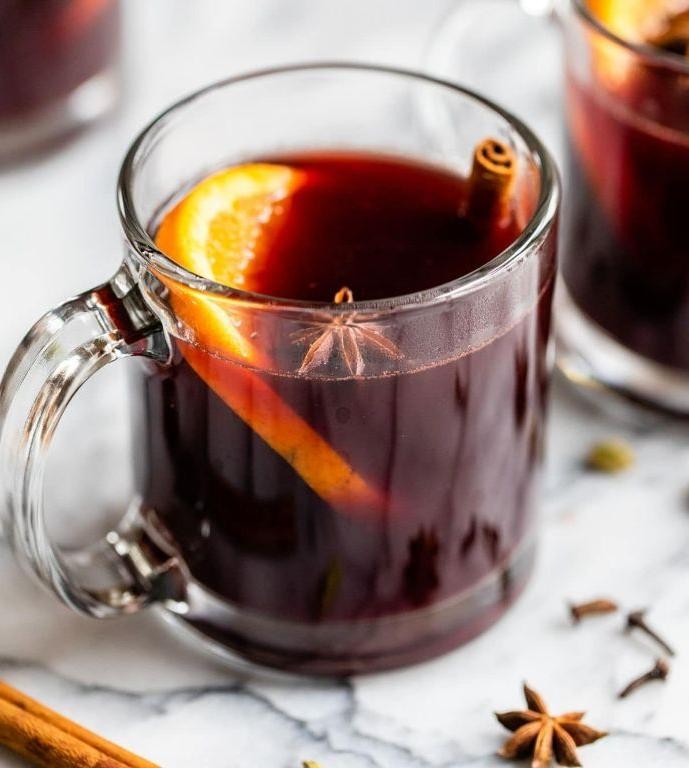
Let’s be real—the only thing better than wine is wine that’s been transformed into a cozy, spice-infused hug in a mug. This warm spiced mulled wine is basically autumn’s way of giving you a high-five, with a fragrance that’ll make your kitchen smell like a festive dream. It’s the ultimate chilly-evening companion, guaranteed to banish any seasonal blues with one deliciously aromatic sip.
5
servings10
minutes30
minutesIngredients
– 1 bottle of robust, fruity red wine
– 1/2 cup of fragrant, golden honey
– 1/4 cup of freshly squeezed orange juice
– 2 whole, plump cinnamon sticks
– 5 whole, aromatic star anise pods
– 10 whole, warming cloves
– 1 thinly sliced, bright orange (with peel)
Instructions
1. Pour the robust, fruity red wine into a large, non-reactive saucepan.
2. Add the fragrant, golden honey and freshly squeezed orange juice to the saucepan.
3. Drop in the plump cinnamon sticks, aromatic star anise pods, and warming cloves.
4. Float the thinly sliced, bright orange (with peel) on top of the mixture.
5. Heat the saucepan over medium-low heat until the liquid reaches 160°F, using a kitchen thermometer to check—this prevents the alcohol from boiling off too quickly.
6. Reduce the heat to low and let the mulled wine simmer gently for 20 minutes, stirring occasionally with a wooden spoon to dissolve the honey and blend the flavors.
7. Turn off the heat and let the mulled wine steep for an additional 10 minutes to deepen the spice infusion—this extra time makes all the difference in flavor complexity.
8. Strain the mulled wine through a fine-mesh sieve into heatproof mugs, discarding the solids for a smooth, sip-worthy texture.
Cozy up to this velvety, spice-kissed elixir that’s both soothing and spirited, with a warmth that lingers long after the last drop. For a festive twist, garnish each mug with a fresh cinnamon stick or a slice of orange, or pair it with buttery shortbread cookies to balance the subtle sweetness.
Lush Blackberry Wine
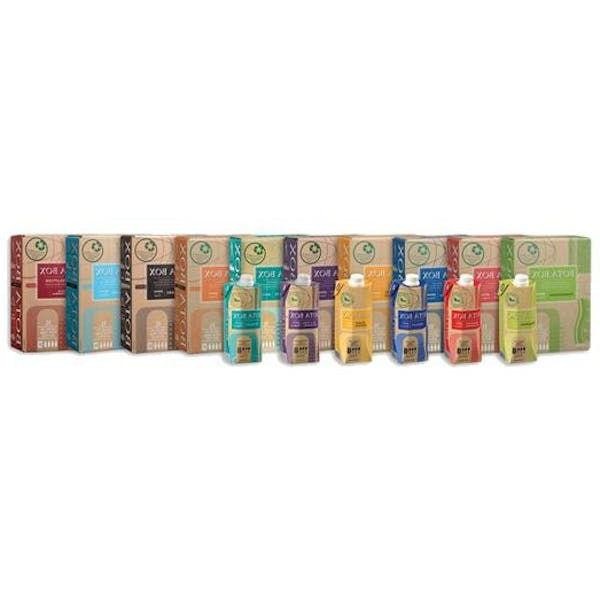
Fellow fruit enthusiasts, gather ’round your bubbling cauldrons! We’re about to transform humble blackberries into a potion so lush and vibrant, it’ll make your taste buds do a happy dance and forget all their troubles.
6
servings15
minutesIngredients
– 4 cups plump, juicy fresh blackberries
– 1 cup granulated white sugar
– 1 (750 ml) bottle dry red wine
– 1/4 cup freshly squeezed lemon juice
– 1 cinnamon stick
Instructions
1. Gently rinse 4 cups of plump, juicy fresh blackberries in a colander and pat them completely dry with paper towels.
2. Combine the rinsed blackberries and 1 cup of granulated white sugar in a large, non-reactive bowl.
3. Use a potato masher to thoroughly crush the blackberries, releasing all their vibrant juices and creating a chunky pulp.
4. Pour 1 (750 ml) bottle of dry red wine over the mashed blackberry mixture.
5. Stir in 1/4 cup of freshly squeezed lemon juice until fully incorporated.
6. Add 1 cinnamon stick to the mixture and give it one final stir.
7. Cover the bowl tightly with plastic wrap and refrigerate for exactly 48 hours to allow the flavors to meld perfectly. (Tip: Give the mixture a gentle stir every 12 hours to redistribute the fruit and ensure even infusion.)
8. After 48 hours, strain the mixture through a fine-mesh sieve into a clean pitcher, pressing gently on the solids with the back of a spoon to extract all the flavorful liquid.
9. Discard the remaining pulp and cinnamon stick. (Tip: Don’t press too hard or you’ll cloud your wine with fine sediment.)
10. Pour the strained lush blackberry wine into a glass bottle or carafe with a tight-sealing lid.
11. Chill the bottled wine in the refrigerator for at least 4 hours before serving to allow the flavors to fully settle and harmonize. (Tip: This wine tastes even better after 24 hours of chilling, so plan ahead if you can!)
This vibrant elixir boasts a spectacular ruby-purple hue and delivers an irresistible sweet-tart punch that dances across your palate. Serve it chilled in fancy glasses for a sophisticated mocktail, or mix it with sparkling water and a sprig of fresh mint for the ultimate refreshing sipper that’ll make you feel like a backyard mixologist.
Refreshing Watermelon Wine
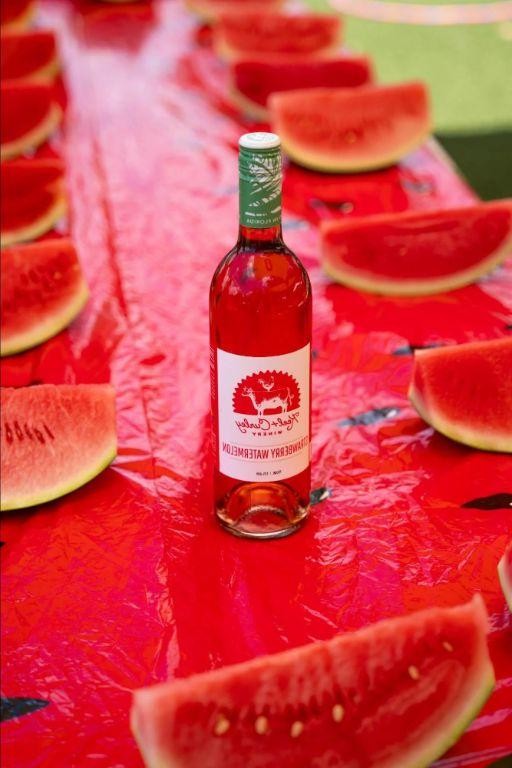
Zesty watermelon wine? Yes, you read that right—this isn’t your grandma’s fruit salad situation. We’re turning summer’s juiciest star into a sip-worthy, slightly tipsy treat that’ll have you questioning why you ever settled for plain old lemonade. Get ready to wine down with watermelon in the most deliciously unexpected way.
2
servings15
minutesIngredients
– 4 cups cubed seedless watermelon (chilled and ruby-red)
– 1 cup dry white wine (crisp and citrus-forward)
– 1/4 cup freshly squeezed lime juice (from plump, vibrant limes)
– 2 tablespoons fine granulated sugar
– 8-10 fresh mint leaves (bright green and aromatic)
– 1 cup chilled sparkling water (bubbly and refreshing)
Instructions
1. Place 4 cups cubed seedless watermelon in a high-speed blender and blend on high for 45 seconds until completely smooth and frothy.
2. Pour the watermelon puree through a fine-mesh strainer into a large pitcher, pressing with a spatula to extract all liquid while leaving pulp behind—this ensures a silky texture.
3. Add 1 cup dry white wine to the pitcher and stir gently with a long spoon to combine.
4. Squeeze 1/4 cup fresh lime juice directly into the pitcher, catching any seeds with your free hand.
5. Sprinkle 2 tablespoons fine granulated sugar into the mixture and stir continuously for 1 minute until fully dissolved.
6. Lightly slap 8-10 fresh mint leaves between your palms to release their oils, then drop them into the pitcher.
7. Chill the mixture in the refrigerator for exactly 30 minutes to allow flavors to meld without the mint becoming bitter.
8. Remove the pitcher from refrigerator and gently stir in 1 cup chilled sparkling water just before serving to preserve bubbles.
9. Fill glasses with ice cubes and pour the watermelon wine over, garnishing with extra mint sprigs if desired.
What you get is a effervescent sip that dances between sweet watermelon brightness and crisp wine sophistication. The texture is like summer itself—light, bubbly, and impossibly refreshing. Try serving it in hollowed-out watermelon halves for maximum patio drama, or freeze it into popsicles for an adults-only frozen treat that’ll make you the hero of every heatwave.
Tangy Cherry Wine
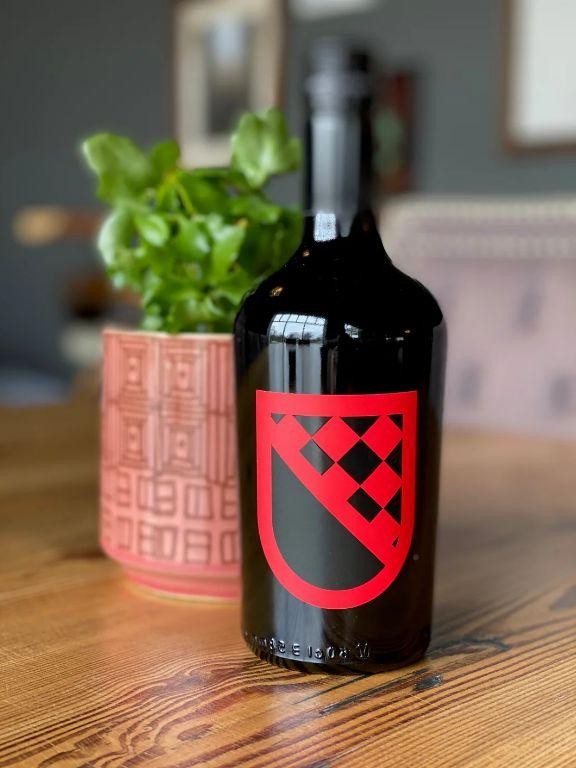
Gather ’round, wine enthusiasts and kitchen adventurers! We’re about to transform your ordinary evening into an extraordinary affair with this brilliantly tangy cherry wine that’s so good, it might just make you question every store-bought bottle you’ve ever purchased. Get ready to impress your friends, your palate, and possibly even your sourdough starter with this vibrant concoction.
1
gallon60
minutesIngredients
– 2 pounds of plump, dark sweet cherries, pitted
– 4 cups of granulated white sugar
– 1 packet of active dry wine yeast
– 1 gallon of filtered spring water
– 1 large organic lemon, freshly squeezed for its zesty juice
– 1 campden tablet, crushed to a fine powder
Instructions
1. Thoroughly wash and pit 2 pounds of plump, dark sweet cherries, placing them into a sterilized 2-gallon fermentation bucket.
2. Use a potato masher to crush the cherries completely until they release their deep red juices and form a pulpy mixture.
3. Heat 4 cups of granulated white sugar with 1 gallon of filtered spring water in a large stockpot over medium heat, stirring continuously until the sugar fully dissolves and the mixture reaches 150°F on a kitchen thermometer.
4. Pour the warm sugar-water mixture over the crushed cherries in the fermentation bucket, stirring gently to combine.
5. Allow the mixture to cool to room temperature (70–75°F), which typically takes about 1–2 hours—patience here prevents killing the yeast!
6. Stir in 1 packet of active dry wine yeast and the juice from 1 large organic lemon until fully incorporated.
7. Cover the bucket loosely with a clean cloth and let it ferment in a dark, cool place (65–70°F) for 7 days, stirring once daily with a sanitized spoon.
8. After 7 days, strain the liquid through a fine-mesh sieve lined with cheesecloth into a clean 1-gallon glass jug, discarding the cherry solids.
9. Add 1 crushed campden tablet to the jug, then seal it with an airlock filled with water.
10. Let the wine ferment in the jug for 4–6 weeks until bubbling in the airlock stops completely, indicating fermentation is finished.
11. Siphon the wine into sterilized bottles using a racking cane, leaving any sediment behind in the jug.
12. Cap the bottles tightly and age the wine in a cool, dark place for at least 3 months before enjoying. Really, the magic happens in that first sip—this cherry wine bursts with a tangy-sweet punch, balanced by a smooth, slightly effervescent texture that dances on the tongue. Serve it chilled in elegant glasses for a fancy night in, or mix it into spritzers with a splash of soda for a refreshing summer twist that’ll have everyone asking for your secret.
Smooth Apricot Wine
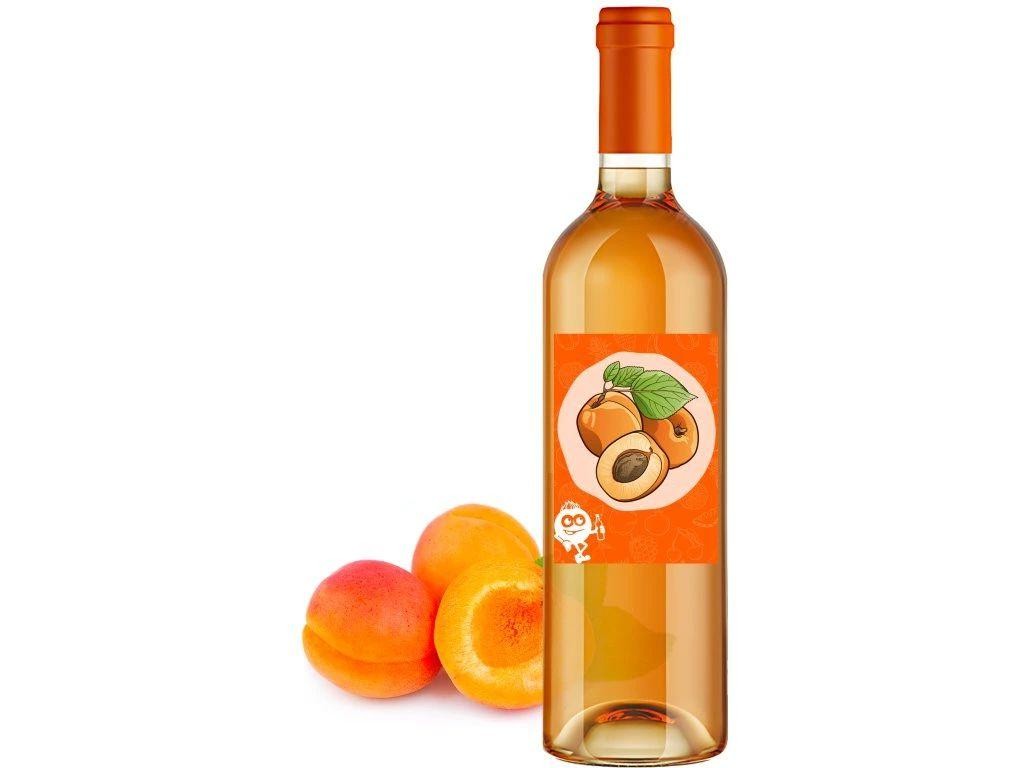
Zesty, zingy, and downright magical—this smooth apricot wine is the liquid sunshine your taste buds have been begging for, transforming humble stone fruit into a golden elixir that’ll make you feel like a backyard alchemist. It’s the perfect sipper for when life gives you apricots (and a little patience), delivering a fruity kick that’s smoother than your best dance moves. Get ready to bottle up some joy, because this recipe is about to become your new favorite fermenting project.
1
gallon30
minutesIngredients
- 4 pounds ripe, fragrant apricots, pitted and roughly chopped
- 2 cups granulated white sugar
- 1 packet active wine yeast
- 1 gallon filtered water
- 1 teaspoon acid blend for balance
- 1 Campden tablet, crushed
Instructions
- Sanitize a 1-gallon glass fermenting jug, airlock, and all utensils with a no-rinse sanitizer to prevent unwanted bacteria—clean gear is key for happy fermentation.
- Combine the 4 pounds of ripe, fragrant apricots (pitted and roughly chopped) and 2 cups granulated white sugar in a large, non-reactive pot.
- Mash the apricots and sugar together with a potato masher until the fruit is pulpy and the sugar begins to dissolve, about 3–4 minutes of enthusiastic squishing.
- Pour in 1 gallon of filtered water and stir vigorously to fully dissolve any remaining sugar crystals.
- Stir in 1 teaspoon acid blend for balance and the crushed Campden tablet, then cover the pot loosely and let it sit for 24 hours at room temperature (68–72°F) to stabilize.
- After 24 hours, sprinkle 1 packet active wine yeast over the mixture and stir gently to incorporate—this wakes up the yeast for fermentation fun.
- Transfer the mixture to the sanitized 1-gallon glass fermenting jug, leaving 2–3 inches of headspace at the top to avoid overflow.
- Fit the airlock onto the jug, filling it with water as directed, and place the jug in a dark, cool spot (65–70°F) for 2 weeks.
- Check the airlock daily for bubbles; active fermentation should show steady bubbling for the first 5–7 days—if it slows, give the jug a gentle swirl to rouse the yeast.
- After 2 weeks, siphon the wine into a clean, sanitized jug, leaving sediment behind, and age it for at least 3 months in a cool, dark place for optimal smoothness.
Creamy and lush with a velvety mouthfeel, this apricot wine bursts with tropical sweetness and a subtle tang that dances on the palate. Serve it chilled in elegant glasses for a fancy brunch, or mix it into spritzers with a splash of soda for a refreshing twist—either way, it’s a bottled hug of summer vibes.
Velvety Plum Wine
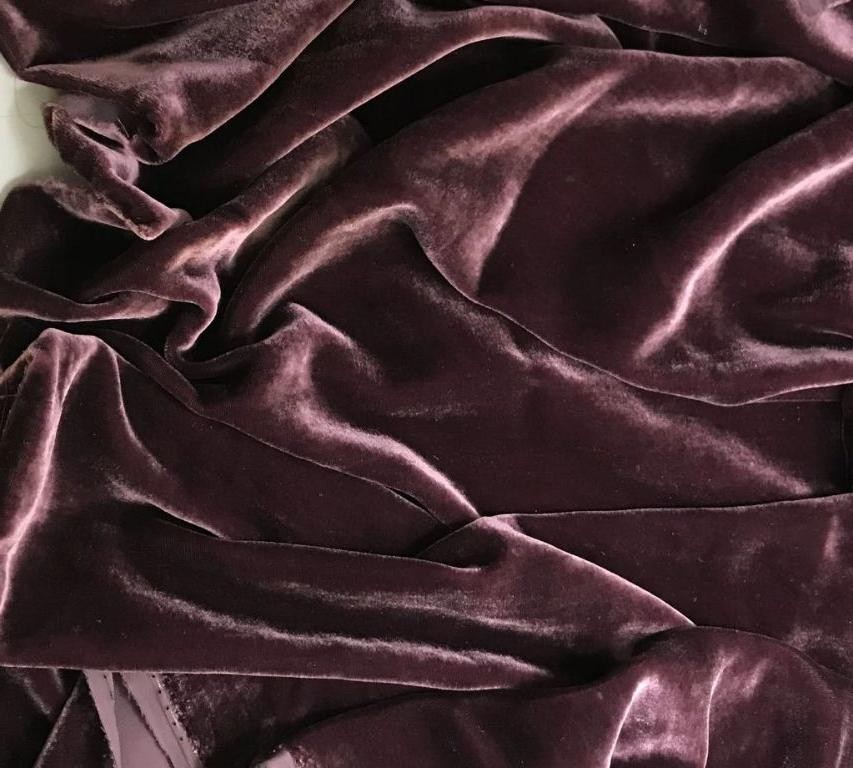
Gather ’round, fellow flavor adventurers, because we’re about to transform humble plums into liquid velvet that’ll make your taste buds do a happy dance! This isn’t just plum wine—it’s a sip-worthy symphony of sweet, tart, and downright delightful that’ll have you feeling like a backyard alchemist. Get ready to bottle up some pure magic that’s easier to make than resisting second helpings of dessert.
1
gallon30
minutesIngredients
– 4 pounds ripe, fragrant plums
– 2 cups granulated white sugar
– 1 packet active wine yeast
– 1 gallon filtered water
– 1 juicy lemon
Instructions
1. Thoroughly wash 4 pounds of ripe, fragrant plums under cool running water to remove any dirt or residue.
2. Pit each plum using a sharp knife, being careful to preserve as much juicy flesh as possible.
3. Place the pitted plums into a large, sterilized glass fermentation jar, gently crushing them with a wooden spoon to release their vibrant juices.
4. Add 2 cups of granulated white sugar directly to the crushed plums, stirring until the sugar begins to dissolve into the fruity mixture.
5. Squeeze the juice from 1 juicy lemon directly into the jar, catching any seeds with your other hand or a small strainer.
6. Pour 1 gallon of filtered water over the plum mixture, leaving about 2 inches of headspace at the top of the jar.
7. Sprinkle 1 packet of active wine yeast evenly across the surface of the liquid, allowing it to hydrate for 5 minutes before stirring.
8. Cover the jar with a clean cloth secured with a rubber band, storing it in a dark cupboard where the temperature stays consistently between 65-75°F.
9. Stir the mixture vigorously every morning for 14 days, watching for bubbles to form—this indicates fermentation is actively occurring.
10. Strain the liquid through cheesecloth into another sterilized jar after 2 weeks, discarding the solid plum pulp.
11. Seal the jar with an airlock and let it continue fermenting for 3 months in your dark cupboard, checking monthly that the airlock contains water.
12. Carefully siphon the clear wine into sterilized bottles after 3 months, avoiding disturbing the sediment at the bottom.
The resulting plum wine pours with a beautiful rose-gold hue and delivers waves of stone fruit sweetness balanced by a subtle tart finish. Serve it slightly chilled in elegant glasses to impress guests, or mix it into sparkling cocktails for an instant upgrade to any gathering—this velvety creation only gets better with patience, so hide a bottle for next year’s celebration!
Herbal Rose Petal Wine
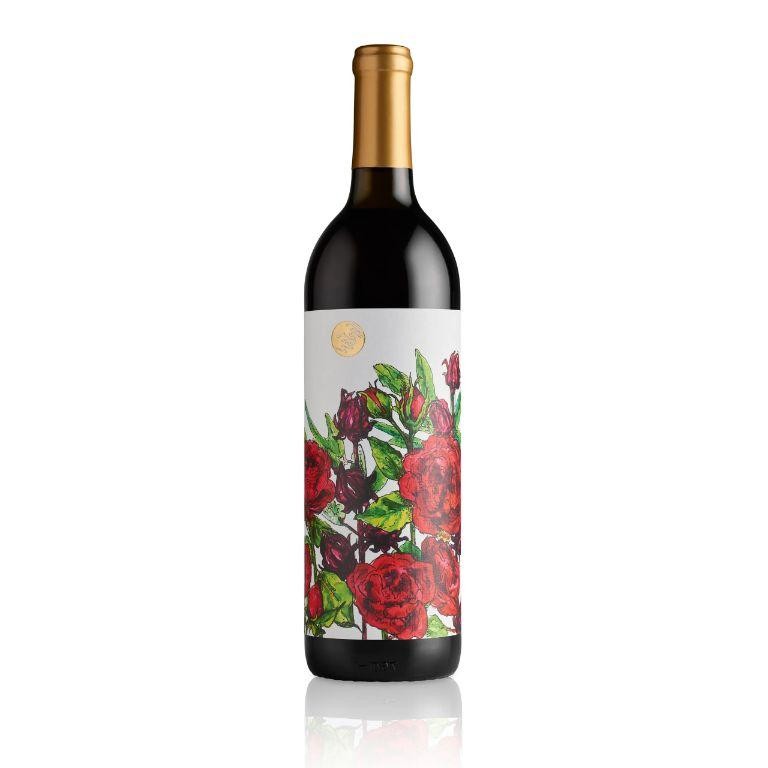
Gather ’round, wine adventurers, because we’re about to turn your kitchen into the most aromatic apothecary this side of Napa Valley. Get ready to craft a potion that’s part romance novel, part herbal remedy, and entirely delicious—this isn’t your grandma’s boxed wine, folks.
1
batch30
minutes15
minutesIngredients
– 2 cups fragrant dried rose petals
– 1 gallon filtered spring water
– 4 cups granulated white sugar
– 1 packet active dry wine yeast
– 1 organic lemon, freshly squeezed
– 1 cinnamon stick
Instructions
1. Combine 2 cups fragrant dried rose petals and 1 gallon filtered spring water in a large sterilized glass jar.
2. Heat the mixture on your stovetop to precisely 160°F, stirring occasionally with a wooden spoon for 15 minutes.
3. Remove from heat and stir in 4 cups granulated white sugar until completely dissolved—no sugary ghosts should remain.
4. Cool the rose infusion to room temperature (about 70°F), which typically takes 45-60 minutes.
5. Add 1 packet active dry wine yeast and the juice from 1 freshly squeezed organic lemon, stirring gently to combine.
6. Drop in 1 cinnamon stick—this little wand will work its spicy magic during fermentation.
7. Cover the jar with cheesecloth secured by a rubber band, creating a breathable but protected environment.
8. Store in a dark cupboard at consistent room temperature (68-72°F) for exactly 14 days.
9. Strain the wine through a fine-mesh sieve into clean bottles, discarding the rose petals and cinnamon stick.
10. Seal bottles tightly and age in a cool, dark place for 4-6 weeks before enjoying.
Zesty and floral with whispers of spice, this ruby-hued elixir dances between delicate and decadent. Serve it chilled in crystal glasses for maximum romance factor, or mix with sparkling water for a sophisticated spritzer that’ll make your taste buds write poetry.
Sweet Elderflower Wine
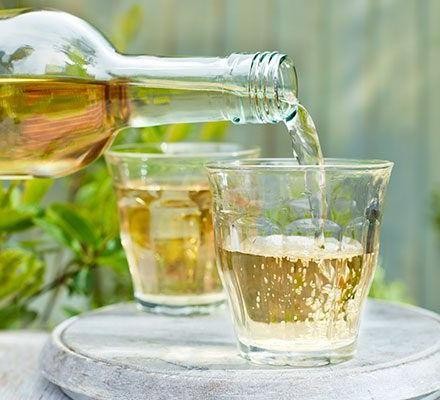
Elderflower enthusiasts, rejoice! This isn’t your grandmother’s dusty bottle of forgotten cordial—this is Sweet Elderflower Wine, a floral fantasy in a glass that’s easier to make than explaining your sudden obsession with foraging to your neighbors. Get ready to bottle up sunshine and sip on pure, fragrant joy.
1
batch30
minutesIngredients
- 8 cups fragrant elderflower blossoms (freshly foraged, pesticide-free)
- 2 lbs granulated white sugar
- 1 large, unwaxed lemon (thinly sliced)
- 1 packet active wine yeast
- 1 gallon filtered water (cool, not cold)
- 1 tsp yeast nutrient
Instructions
- Gently rinse your fragrant elderflower blossoms in cool water to remove any tiny bugs or debris, then shake off excess moisture—no one wants extra protein in their wine.
- Place the cleaned blossoms, 2 lbs granulated white sugar, and thinly sliced unwaxed lemon into a large, sterilized fermentation bucket.
- Heat 1 gallon of filtered water to precisely 165°F—hot enough to extract flavor but not so hot it kills the delicate floral notes.
- Pour the hot water over the elderflower mixture in the bucket, stirring slowly with a sanitized spoon until all the sugar dissolves completely.
- Allow the mixture to cool to room temperature (around 70°F), which typically takes 2–3 hours—patience is key here, unless you enjoy killing your yeast.
- Sprinkle 1 packet of active wine yeast and 1 tsp yeast nutrient over the cooled liquid, then stir gently just to incorporate—no vigorous whisking needed.
- Cover the bucket loosely with a clean cloth or lid (don’t seal it tight) and let it ferment in a dark, cool spot (60–68°F) for 5 days, stirring once daily.
- Strain the liquid through a fine-mesh bag or cheesecloth into a sterilized glass carboy, squeezing gently to extract every last drop of flavor.
- Fit the carboy with an airlock and let the wine ferment undisturbed for 4–6 weeks, until bubbling in the airlock stops completely.
- Carefully siphon the clear wine off the sediment into sterilized bottles, cap tightly, and age for at least 3 months in a cool, dark place—this is where the magic happens.
This wine finishes with a delicate, almost effervescent mouthfeel and a flavor that’s like springtime captured in a bottle—floral, slightly citrusy, and just sweet enough. Try serving it chilled over ice with a sprig of fresh mint, or get fancy and mix it into a floral spritzer for your next garden party.
Bold Cranberry Wine
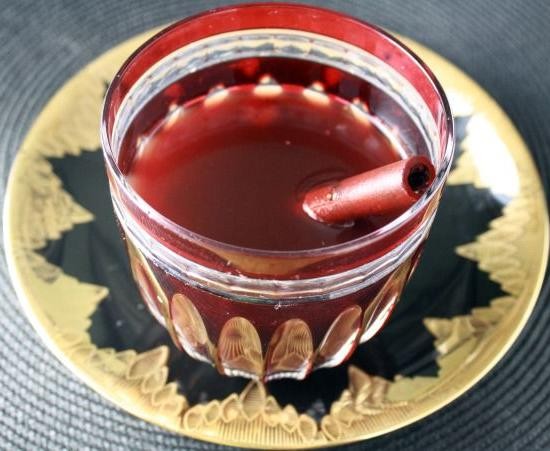
Yikes, have you ever wanted to drink something that tastes like a sophisticated holiday party in a glass? Bold Cranberry Wine is here to answer that call with a punch of tart cranberries mellowed by the warmth of wine—it’s basically your new favorite autumnal hug. Let’s get this party started!
3
servings10
minutes27
minutesIngredients
– 4 cups fresh, plump cranberries
– 1 bottle (750ml) dry red wine, like a bold Cabernet Sauvignon
– 1 cup granulated sugar
– 1 cinnamon stick
– 1 orange, zested and juiced
– 1/4 cup brandy
Instructions
1. Rinse 4 cups of fresh, plump cranberries under cool water and drain them thoroughly.
2. In a large, non-reactive pot, combine the cranberries, 1 bottle of dry red wine, 1 cup of granulated sugar, 1 cinnamon stick, the zest and juice of 1 orange, and 1/4 cup of brandy.
3. Heat the mixture over medium heat, stirring occasionally with a wooden spoon, until it reaches a gentle simmer (about 5–7 minutes). Tip: Avoid boiling to preserve the wine’s alcohol content and delicate flavors.
4. Reduce the heat to low and let it simmer uncovered for 20 minutes, stirring every 5 minutes, until the cranberries have burst and the liquid has slightly thickened.
5. Remove the pot from the heat and let it cool to room temperature (about 1 hour) to allow the flavors to meld. Tip: For a smoother texture, you can mash the cranberries gently with the back of a spoon after cooling.
6. Strain the mixture through a fine-mesh sieve into a clean pitcher, pressing lightly on the solids to extract all the liquid; discard the solids.
7. Chill the strained wine in the refrigerator for at least 2 hours, or until it’s thoroughly cold. Tip: Serve it over ice for an extra refreshing twist, or garnish with a fresh orange slice for a pop of color.
Sip this vibrant concoction and revel in its velvety texture that dances between tart and sweet, with the cranberries lending a bold tang that’s perfectly balanced by the wine’s depth. Try serving it in chilled glasses with a sprig of rosemary for an aromatic kick, or pair it with sharp cheeses to let those fruity notes shine.
Fresh Pomegranate Wine
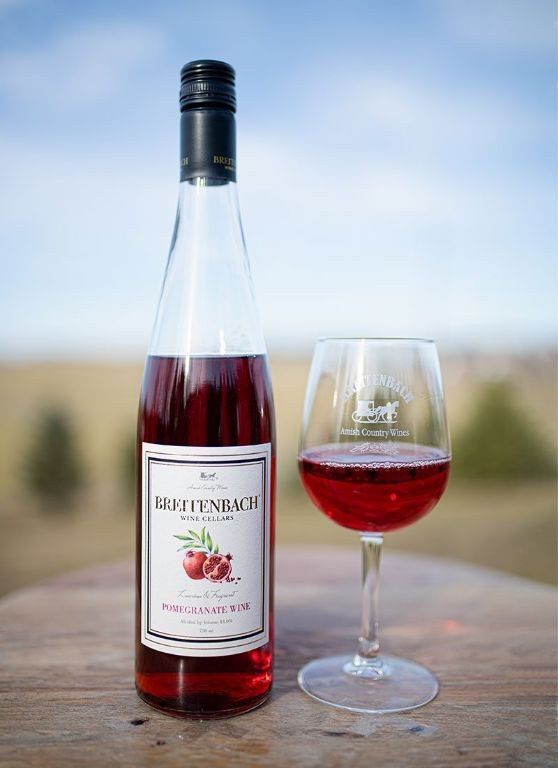
Whew, who knew your favorite ruby-red fruit could moonlight as the life of the party? This fresh pomegranate wine is about to become your new go-to for impressing guests (or just treating yourself after a long day) with its vibrant color and irresistible sweet-tart kick. Let’s turn those jewel-like seeds into a sip-worthy sensation that’s easier to make than pronouncing “pomegranate” after a glass or two.
1
gallon30
minutesIngredients
– 4 cups freshly squeezed pomegranate juice (from about 6–8 plump, heavy pomegranates)
– 1 cup granulated sugar (for that sweet, crystal-clear magic)
– 1 packet wine yeast (the tiny powerhouse that works the fermentation wonders)
– 1 gallon filtered water (crisp and clean to let the fruit shine)
– 1 teaspoon yeast nutrient (a little boost for a happy, bubbly ferment)
Instructions
1. Thoroughly wash and sanitize a 1-gallon glass jug, airlock, and funnel with hot, soapy water to prevent any unwanted microbial party crashers.
2. Roll the pomegranates firmly on the countertop to loosen the juicy arils inside, making them easier to extract later.
3. Cut each pomegranate in half horizontally and firmly squeeze the halves over a fine-mesh strainer set atop a large bowl to collect the vibrant, deep-red juice, discarding any bitter white pith that sneaks through.
4. Pour the freshly squeezed pomegranate juice into the sanitized jug using the funnel.
5. Add the granulated sugar directly to the jug, swirling gently until it fully dissolves into the juice for a smooth, non-gritty base.
6. Carefully pour in the filtered water, leaving about 2 inches of headspace at the top to accommodate bubbling during fermentation.
7. Sprinkle the wine yeast and yeast nutrient into the jug, then securely attach the airlock filled with water to let CO2 escape while keeping oxygen out—this is key for a clean, successful ferment.
8. Store the jug in a cool, dark place (like a pantry or closet) at 65–75°F for 14 days, resisting the urge to peek so the yeast can work its magic undisturbed.
9. After 14 days, siphon the wine into clean bottles, leaving any sediment behind in the jug for a brilliantly clear final product.
10. Cap the bottles tightly and let them age in a cool, dark spot for at least 1 month to mellow the flavors and develop a smoother profile.
Seriously, the first sip will hit you with a bright, tangy burst that mellows into a subtle sweetness, all wrapped up in a gorgeously clear, ruby-red hue. Serve it chilled in fancy glasses for a dinner party, or mix it with a splash of soda and a lime wedge for a spritzy afternoon refresher that’ll make you feel like a backyard winemaking pro.
Conclusion
Gather your ingredients and let these 24 homemade wine recipes inspire your next kitchen adventure! From elegant dinners to casual gatherings, there’s something here for every occasion. We’d love to hear which recipes become your favorites—drop us a comment below and don’t forget to share your creations by pinning this article on Pinterest. Cheers to delicious discoveries in your kitchen!
